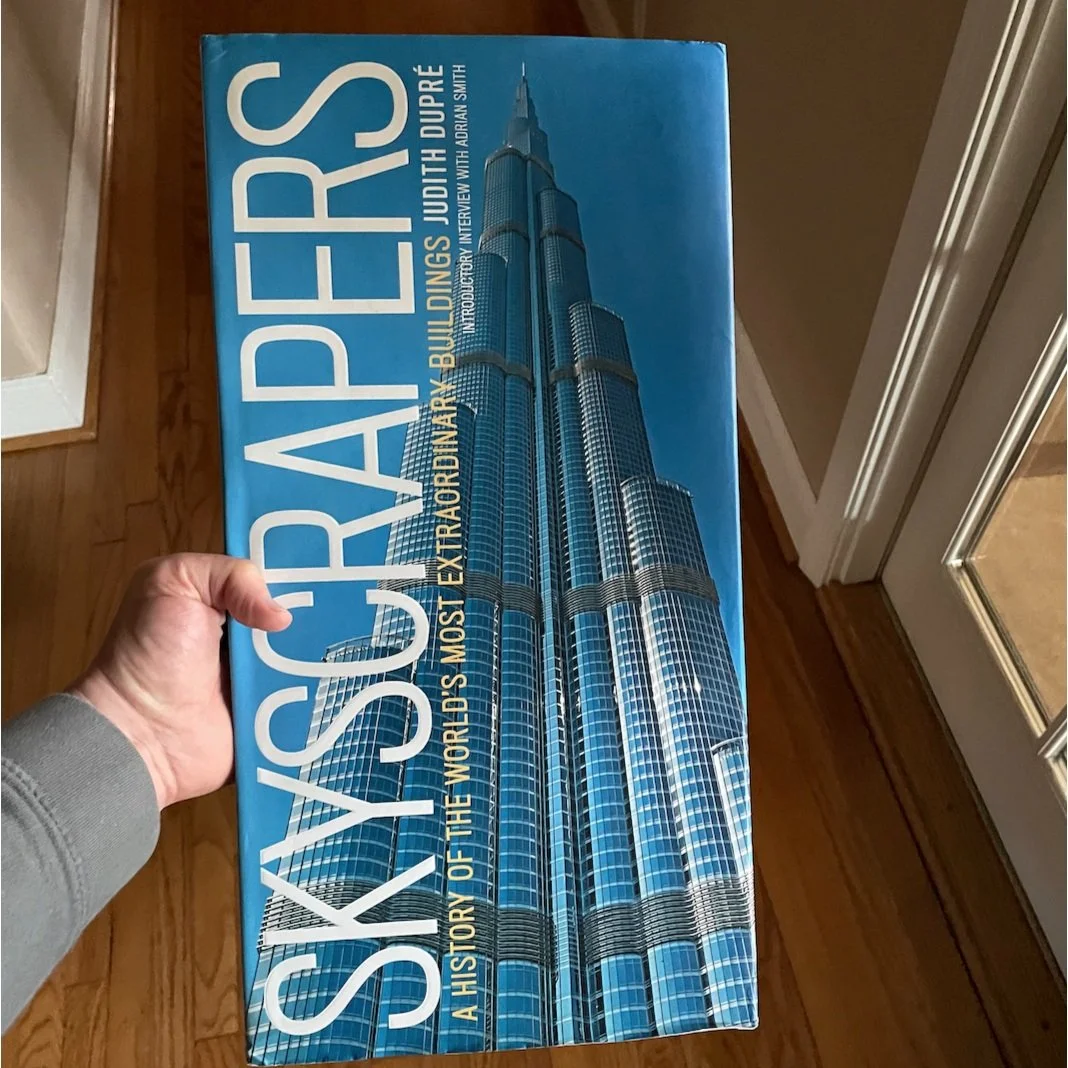The Story of Buildings is the Story of Us
When I was a kid, one of my favorite books in the house was the “100 Greatest Buildings in Architectural History.” It was a thick, big picture book with dimensions that were slightly bigger than a Rolling Stone magazine (an oversized tabloid at the time).
I loved crouching on the floor in the den to page through its illustrations. Gatefolds opened up to show artist’s versions of the Great Pyramids, the Parthenon, the Taj Mahal, Notre Dame, the Crystal Palace, the Chrysler Building and on and on up to what was then called the Sears Tower (today Willit’s Tower). Cutaways and callouts showed the structural and cultural details that made each building a singular monument of the civilizations that had built them.
I was recently reminded of the awe and wonder I had when I returned to the latest version of that book, “The Story of Buildings” that I bought for one of my kids. Slightly smaller in size (more like an oversized picture book from Blurb) it no longer promised the breadth of history in the title but instead offered a deeper and bigger theme about what buildings really are: the story of culture writ large.
It starts with a two page chapter on what it must have been like to build a hut in the unforgiving elements of nature. Today we take for granted the problem solving and tools that a pre-historic person had to command to create a lean-to that didn’t fall over in the wind or leak in the rain. Such a humble reminder is a perfect way to launch into the stories of the great buildings throughout time that people have worked together to construct.
In the process we learn how every building is not just an example of any given era’s design and technology, but a statement of social values and philosophy — a 3-D reflection of the society that made them.
We wonder at the cruelty of the social organization it required to build the Pyramid of Djoser. We learn how stone arches and domes allowed the Romans to build enormous and muscular structures that both awed and cowed throngs at coliseums and temples. We see how the Forbidden City was designed as a show of enclosed power that eventually became too isolating to have any force over the world beyond its walls. We witness the great jump that the industrial revolution represented for construction with the modular build of the Crystal Palace in 1851. We gape at the tall world Louis Sullivan made with skyscrapers that he considered to be alive and democratic. We see the faith in the power of dreams to shape reality in the way Utzon’s sketch pushed engineering, technology, and builders to create the Sydney Opera House. We get a sense of the environmental and sustainable direction we are headed toward with an examination of the Straw Bale House built by Wigglesworth and Till in London some 20 years ago.
While the book touches on structures like the Hindu temple at Angkor Wat; the pyramids at Palenque, Mexico; the Taj Mahal; the Mosque of Ibn in Cairo — and so forth — the book is definitely Euro-centric in its focus. That means there’s clearly a good opportunity for another book. Still, it’s possible to see in its reflections on Western Civilization’s buildings that there is a take-away that is likely universal for any building, in any era, no matter how big or small. Quite simply: The story of a building is more than the story of time and materials and function, it is the story of us.
Coming out of the pandemic, that is a good thing to remember as we grapple with ideas of how home and work will co-exist in the same places and we sort out who we are, now..
The Story of Buildings by Patrick Dillon, illustrated by Stephen Biesty.




